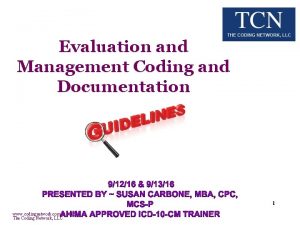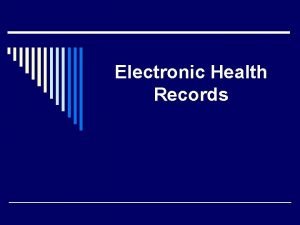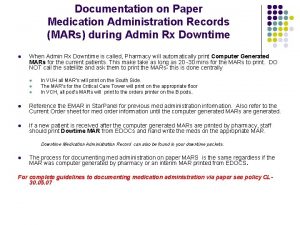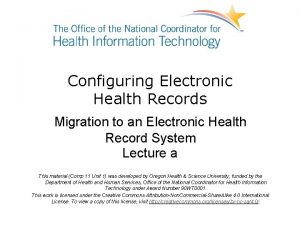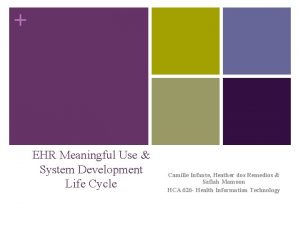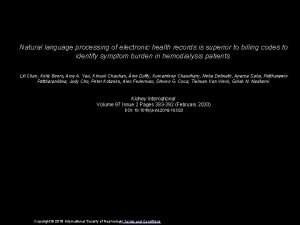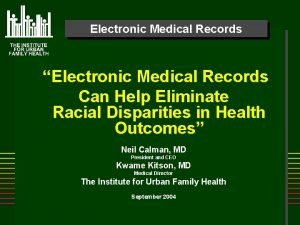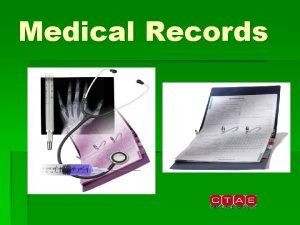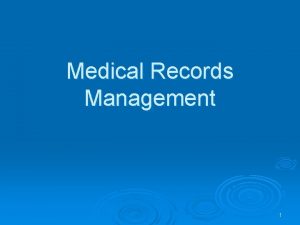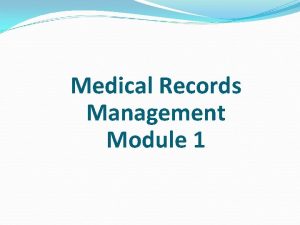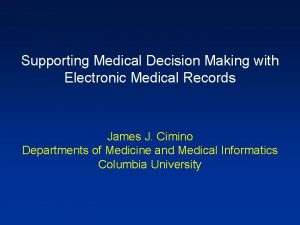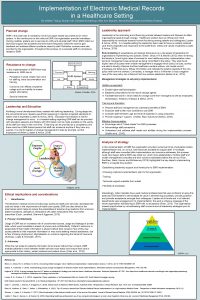Craig Stennett Implementation of an Electronic Medical Records












- Slides: 12

@ Craig Stennett Implementation of an Electronic Medical Records System: Amman RSP Hospital Muhima Mohamed 1, Abhinav Peddada 2, Yahya Kalilah 1, Rasheed Al Sammaraie 1, Marc Schakal 1, Caroline Seguin 3, Megan Mc. Guire 4 Médecins Sans Frontières – Amman, 2 Thought. Works Inc. , 3 Médecins Sans Frontières – Dubia, 4 Médecins Sans Frontières – New York 1 MSF Innovation Day, 20 MAY 2017 We confirm we have permission to use images from participants included in this presentation

Program Objective ‐ Reconstructive surgery project – multidisciplinary care ‐ Orthopedic ‐ Plastic ‐ Maxillo‐Facial ‐ 148 bed hospital ‐ 50‐ 55 admission / month ‐ ALOS – 4‐ 5 months

Challenge ‐ 100+ excel spreadsheets ‐Master patient index ‐Person dependent data collection and use processes ‐Lack of standard terminology / definitions ‐EMR project objective: ‐Streamline patient information flow ‐Provide real‐time feedback

Solution Centralized platform – automatically generate unique identifier Display key patient data Capture patient transition points and status Display key hospital indicators

Proposed Timelines Nov 2016 Apr 2017 Oct 2017

Process ‐ Hospital needs assessment ‐ Improvement of hospital infrastructure ‐ Governance structure ‐ Analysis of patient / information flow ‐ Creation and definition of medical data and content ‐ Feature Development

Implementation Impact ‐ Use of unique structured patient identifiers ‐ Standardized terminology (diagnoses / procedures) ‐ Change in bed management tool ‐ Patient / information flow changes ‐ Visibility of information collected by different care providers @ Megan Mc. Guire

Implementation Challenges ‐ Development of medical content ‐ Implementation of information + patient flow changes ‐ Revisions and delays in project timelines ‐ Communication of detailed requirements to third party ‐ Extended transition period for the hospital team

End User Feedback ‐ Release 1 = 6 users ‐ Release 2 = 52 users ‐ Self‐administered 6‐ item questionnaire to assess user satisfaction (n=20) *Paramedical = physiotherapist (n=9) and registered nurses (n=2)

Lessons ‐ Global vision and direction provided by coordinators ‐ Early and constant communication to hospital team about status of implementation ‐ Engagement and support of clinical staff in feature and content development ‐ Focus on patient flow, and information exchange rather than technology

Next Steps ‐ Onboarding remaining hospital staff ‐ Continuous training for end users ‐ Remaining content development ‐ Complete development of key features ‐ Knowledge transfer and ownership to the mission ‐ Development of a quality team ‐ Use of data for decision‐making and reporting ‐ Extend to select hospitals

Thank you!
 Pros and cons of electronic health records
Pros and cons of electronic health records Benefits of public health
Benefits of public health Electronic medical records
Electronic medical records Paper vs electronic medical records
Paper vs electronic medical records Gbmc infoweb
Gbmc infoweb Torrance memorial tcu
Torrance memorial tcu Cartersville medical center medical records
Cartersville medical center medical records Electronic mars records
Electronic mars records +electronic +health +records +migration
+electronic +health +records +migration Electronic health records
Electronic health records Uncitral model law on electronic signatures
Uncitral model law on electronic signatures System development life cycle of electronic health records
System development life cycle of electronic health records Language
Language


